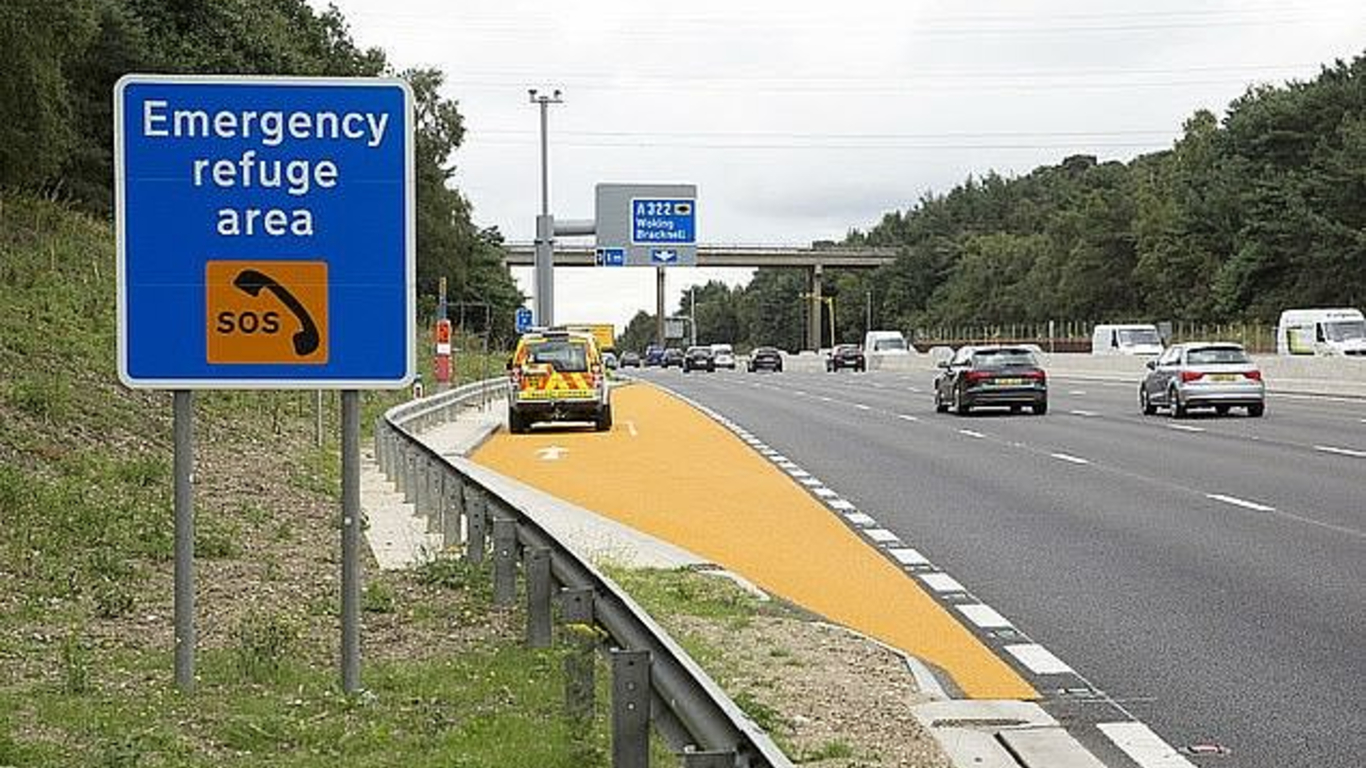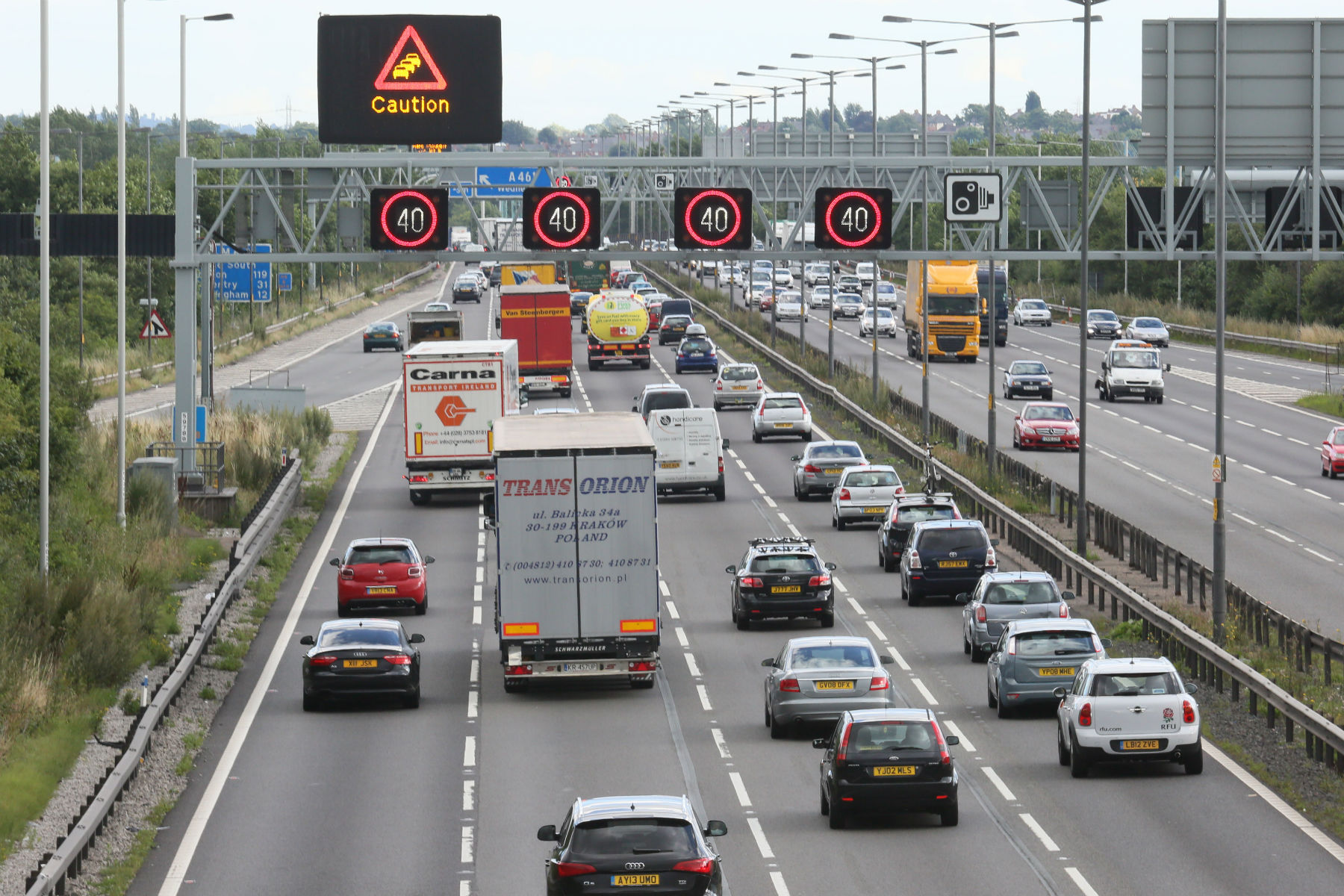
Emergency refuge areas provide a safe haven for stranded vehicles on smart motorways. Located on stretches of motorway where there is no hard shoulder – or where the hard shoulder is sometimes opened as a live lane – emergency refuge areas look similar to a layby.
They are usually highlighted with bright orange tarmac (see photo above) and are only meant to be used in an emergency, such as a puncture or breakdown.
A survey of 2,000 drivers by the RAC found only 1.5 percent had ever used an emergency refuge area, but looking out for them could prevent an accident if your car develops a fault on the motorway and you need to stop.
Make contact before re-joining the motorway
if the hard shoulder is a running lane, what many drivers don’t realise is that you should contact Highways England before rejoining the motorway.
If you didn’t know this, you’re certainly not alone. Just one respondent in the RAC’s survey did.

“It is essential that motorists understand how and when to use an emergency refuge area so they do not put their own safety and that of other road users at risk,” said the RAC’s (now-retired) chief engineer, David Bizley.
“Vehicles should pull up to the indicated mark on the tarmac or the emergency telephone and then the occupants should leave the vehicle from the passenger side. Everyone should stand behind the barriers and should use the emergency roadside telephone provided to speak to a Highways England representative.”
What is a smart motorway?
So-called ‘smart’ motorways have become increasingly widespread, including the M25 and sections of the M6 and M1.
Traffic flow is controlled using variable speed limits displayed on the overhead gantries. Cameras monitor the motorways and lanes can be closed remotely if required, for example if a vehicle breaks down.
Emergency refuge areas are located on smart motorways and should be positioned every 1.5 miles, with an emergency roadside phone available to request assistance.
Smart motorways allow the hard shoulder to be opened as a live lane during busy periods to ease congestion. However, after a number of fatalities, the further expansion of the UK’s smart motorway network was halted by Rishi Sunak in summer 2022. The prime minister cited a lack of public confidence in smart motorways as one reason behind his decision.
ALSO READ:
What to do after a car accident
Hello, I would like to know what happens if a driver cannot get to the refuge area, such as near a junction or other reason?
Whoever decided to introduce smart motorways obviously isn’t so smart themselves, l hope they feel shame whenever they hear of yet another death caused by their stupidly.
I think it is the stupid and very dangerous idea to create these so called smart motorways, there is nothing smart about them, so many people have been killed already, it is the sort of idea even a child would not dream up. Please reverse this idea.